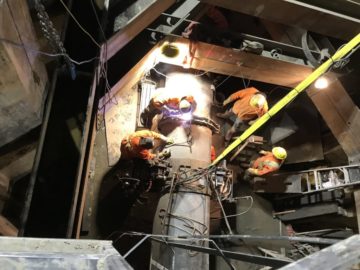
Working within confined spaces requires thinking ahead about what might go wrong. Simply planning to call emergency response in the event of an adverse event is not enough; confined space rescue requires special training.
Issues arising with workers in confined spaces can also go awry very quickly, which means having a detailed emergency response plan is very important. This helps to ensure that your workers are safe and that situations are responded to promptly and appropriately. Quick responses save lives, and time is often of the essence during confined space entry.
Create a Detailed Plan
Creating a detailed plan for what could potentially go wrong within a confined space will allow you to plan for any eventuality, including adapting plans for unforeseen complications. The more prepared you are for an adverse event, the more likely you will be to properly respond. Knowing what to expect but also taking time to plan for the unexpected and developing the tools and plans necessary to deal with such events are key points of plan development and success.
Know Your Area
Knowing the confined area well before having work completed inside it and sending a worker in for the first time will help you know all of the options available in the event that a rescue is needed. From studying building plans to familiarizing yourself with dimensions and the tools that would be able to access the space, knowing the area is of high importance. Each confined space is different, and it is important to treat each one as a unique scenario with its own challenges and opportunities.
Emergency Response
Calling emergency response should be a part of your plan, but it should not be the only part of your plan. Other factors must also be considered to ensure worker safety throughout the process of the plan. Contacting emergency response is just one part of it.
Specially Trained Professionals
Engage professionals who focus on confined space entry and rescue. They are best equipped to deal with situations that may arise during any work that may be performed, and they are a great resource for developing a workable plan to help protect worker safety. Those who have worked in confined spaces and have trained for confined space rescue are best equipped to provide guidance and services in the event that a problem arises. Working with them before an adverse event can help you ensure that a solid plan is in place to deal with anything that may happen.
Emergency response plans often have several facets, and many people take it for granted that emergency response will have all the answers. Relying solely on those responders to help keep workers safe is often a mistake, as having a plan to take quick action is especially important during confined space work. It is in these situations that you should develop a plan prior to an adverse event occurring. Doing so will allow you to respond efficiently and effectively, and it may even save worker lives.